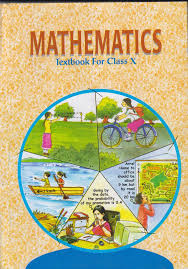Class 10 - Mathematics
Real Numbers - Exercise 1.2

Top Block 1
Exercise 1.2
Question : 1:Express each number as a product of its prime factors:
(i) 140 (ii) 156 (iii) 3825 (iv) 5005 (v) 7429
Answer :
(i) 140 = 2 * 2 * 5 * 7 = 22 * 5 * 7
(ii) 156 = 2 * 5 * 3 * 13 = 22 * 3 * 13
(iii) 3825 = 3 * 3 * 5 * 5 * 17 = 32 * 52 * 17
(iv) 5005 = 5 * 7 * 11 * 13
(v) 7429 = 17 * 19 * 23
Question : 2:Find the LCM and HCF of the following pairs of integers and verify that LCM * HCF = product of the two numbers.
(i) 26 and 91 (ii) 510 and 92 (iii) 336 and 54
Answer :
(i) 26 and 91
26 = 2 * 13
91 = 7 * 13
HCF(26, 91) = 13
LCM(26, 91) = 2 * 7 * 13 = 812
Product of two numbers = 26 * 91 = 2366
LCM(26, 91) * HCF(26, 91) = 13 * 182 = 2366
Hence, LCM * HCF = product of the two numbers
(ii) 510 and 92
510 = 2 * 3 * 5 * 18
92 = 2 * 2 * 23
HCF(510, 92) = 2
LCM(510, 92) = 2 * 2 * 3 * 5 * 17 * 23 = 23460
Product of two numbers = 510 * 92 = 46920
LCM(510, 92) * HCF(510, 92) = 2 * 23460 = 46920
Hence, LCM * HCF = product of the two numbers
(iii) 336 and 54
336 = 2 * 2 * 2 * 2 * 3 * 7
54 = 2 * 3 * 3 * 3
HCF(336, 54) = 2 * 3 = 6
LCM(336, 54) = 2 * 2 * 2 * 2 * 3 * 3 * 3 * 7 = 3024
Product of two numbers = 336 * 54 = 18144
LCM(336, 54) * HCF(336, 54) = 6 * 3024 = 18144
Hence, LCM * HCF = product of the two numbers
Question : 3:Find the LCM and HCF of the following integers by applying the prime factorization method.
(i) 12, 15 and 21 (ii) 17, 23 and 29 (iii) 8, 9 and 25
Answer :
(i) 12, 15 and 21
12 = 2 * 2 * 3
15 = 3 * 5
21 = 3 * 7
HCF(12, 15, 21) = 3
LCM(12, 15, 21) = 2 * 2 * 3 * 5 * 7 = 420
(ii) 17, 23 and 29
17 = 1 * 17
23 = 1 * 23
29 = 1 * 29
HCF(17, 23, 29) = 1
LCM(17, 23, 29) = 17 * 23 * 29 = 11339
(iii) 8, 9 and 25
8 = 2 * 2 * 2
9 = 3 * 3
25 = 5 * 5
HCF(8, 9, 25) = 1
LCM(8, 9, 25) = 2 * 2 * 2 * 3 * 3 * 5 * 5 = 8 * 9 * 25 = 1800
Question : 4:Given that HCF (306, 657) = 9, find LCM (306, 657).
Answer :
We know that
LCM * HCF = product of the two numbers
⇒ LCM (306, 657) * HCF (306, 657) = 306 * 657
⇒ LCM (306, 657) * 9 = 306 * 657
⇒ LCM (306, 657) = (306 * 657)/9 ⇒ LCM (306, 657) = 306 * 73
⇒ LCM (306, 657) = 22338
Question : 5:Check whether 6n can end with the digit 0 for any natural number n.
Answer :
If any number ends with the digit o, it should be divisible by 10.
In other words, it will also be divisible by 2 and 5 as 2 * 5 = 10
Now, prime factor of 6n = (2 * 3)n
It can be observed that 5 is not in the prime factorization of 6n
Hence, for any value of n, 6n will not be divisible by 5.
Therefore, 6ncan not end with the digit 0 for any natural number n.
Mddle block 1
Question : 6:Explain why 7 * 11 * 13 + 13 and 7 * 6 * 5 * 4 * 3 * 2 * 1 + 5 are composite numbers.
Answer :
Numbers are of two types-prime and composite. Prime numbers can be divided by 1 and one
itself whereas composite numbers have factors other than 1 and itself.
It can be observed that
7 * 11 * 13 + 13 = 13 * (7 * 11 + 1)
= 13 * (77 + 1) = 13 * 78 = 13 * 13 * 6
The given expression has 6 and 13 as its factor. Therefore, it is a composite number.
Now, 7 * 6 * 5 * 4 * 3 * 2 * 1 + 5 = 5 * (7 * 6 * 4 * 3 * 2 * 1 + 1)
= 5 * (1008 + 1)
= 5 * 1009
1009 cannot be factorized further. Therefore, the given expression has 5 and 1009 as its
factors. Hence, it is a composite number.
Question : 7:There is a circular path around a sports field. Sonia takes 18 minutes to drive one round of the field, while Ravi takes 12 minutes for the same.
Suppose they both start at the same point and at the same time, and go in the same direction.
After how many minutes will they meet again at the starting point?
Answer :
Required number of minutes is the LCM of 18 and 12
We have,
18 = 2 * 3 * 3
12 = 2 * 2 * 3
LCM(12, 18) = 2 * 2 * 3 * 3 = 36
Hence, Ravi and Sonia will meet again at the starting point after 36 minutes.

